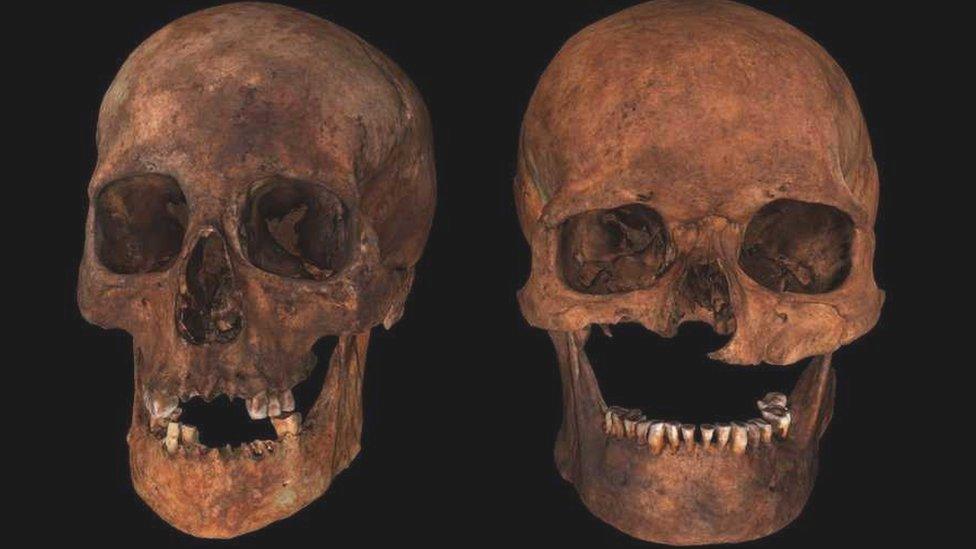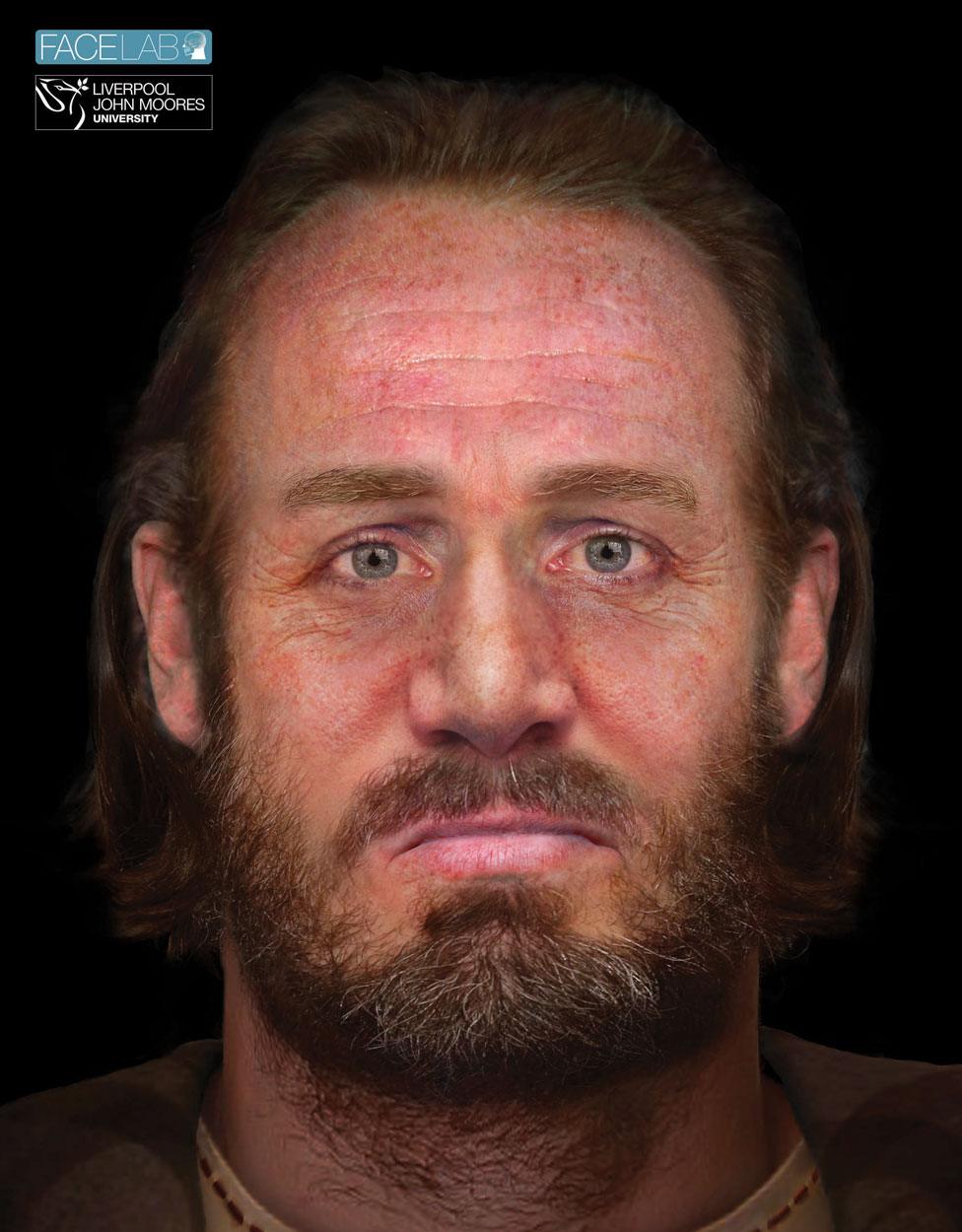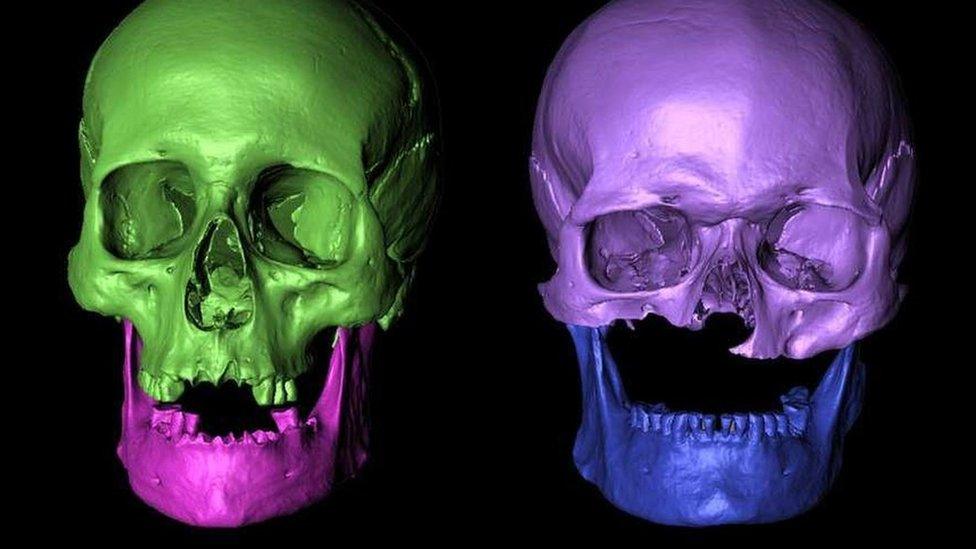Grave with six skulls could be clan feud burial site
- Published

The skull on the left - from one of two skeletons found - shows evidence of a fatal wound
A grave in the Highlands could hold the victims of a violent clan feud, archaeologists have said.
The male two skeletons surrounded by four skulls found at St Colman's Church in Portmahomack are believed to date from the 15th Century.
Archaeologists said one of them was a powerfully-built man. He has a fatal sword wound to his skull.
Radiocarbon dating and DNA analysis could reveal more information about the remains.
Historically, the area of Easter Ross was the scene of a feud between the clans Ross and Mackay.
During the late 15th Century St Colman's Church was burnt down before a battle nearby between the MacKay and Ross clans.
Archaeologists said it was likely the men in the six-headed burial were involved in the hostilities.

A facial reconstruction has been produced of one of the men found in the grave

The skeletons and skulls were first excavated in 1997.
Archaeologists from York-based Fieldwork Archaeological Services (FAS) and the University of Bradford have been examining the remains for several years as part of the Tarbat Medieval Burials project.
They hope new analysis will unlock further details about the skeletons, and also the four other skulls.
The research so far has included a reconstruction of the face of the second man whose skeleton was found in the grave.
Dr Cecily Spall, of FAS, told BBC Radio Scotland: "We are going to look at what they were eating in their lives, and try to identify where they might have been born.
"We are also going to get them analysed to see if any of their ancient DNA is preserved."
She added: "Are these men related? Are they father and son, brothers, or are they clan chiefs who were related to each other, or are they rivals?"
Dr Shirley Curtis-Summers, of the University of Bradford, is leading the bones and dietary analysis of the skeletons.
Dr Jessica Liu and Dr Sarah Shrimpton at the Face Lab at Liverpool John Moores University produced the facial reconstruction.

A visualisation of the skeletons' skulls